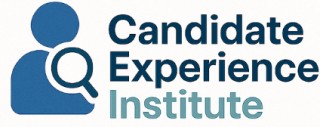
Understanding HR Training Process Problems
Recognizing the Core Issues in HR Training
The HR training process is pivotal in shaping the overall candidate experience, yet it often faces numerous challenges that can hinder its effectiveness. Understanding these problems is crucial for organizations aiming to improve their employee training and development programs. Let's delve into some of the common issues that HR departments encounter.
Misalignment with Organizational Goals
One of the primary challenges is the misalignment between training programs and the broader organizational goals. When training initiatives do not reflect the company's objectives, employees may struggle to see the relevance of their training, leading to disengagement and poor performance. Ensuring that training aligns with the company's mission and values is essential for fostering a cohesive company culture and enhancing employee engagement.
Inadequate Resources and Time Constraints
Another significant issue is the lack of resources and time allocated for training. Many organizations find themselves stretched thin, with limited budgets and tight schedules, making it difficult to provide comprehensive training. This can lead to rushed sessions that do not fully equip employees with the necessary skills and knowledge. Effective time management and resource allocation are crucial to overcoming these hurdles.
Outdated Training Methods
Traditional training methods may not always meet the needs of today's dynamic work environment. Relying on outdated techniques can result in a lack of engagement and retention among employees. Embracing modern training development strategies, such as interactive learning and leadership development programs, can significantly enhance the training experience.
Addressing Conflict Resolution and Employee Performance
Training programs often overlook essential skills like conflict resolution and performance management. These are critical for maintaining a harmonious work environment and ensuring that employees can effectively collaborate with their team members. Incorporating these elements into training can help improve employee performance and foster a positive employee experience.
For more insights on optimizing HR processes, consider exploring common pitfalls in employee time tracking and how they can impact the training process.
Impact on Candidate Experience
Impact on Candidate Perceptions and Outcomes
Navigating the challenges in human resources training is not just about internal operations—it significantly influences candidate perceptions and outcomes. A well-structured training process greatly enhances the candidate experience by ensuring that every interaction is professional and aligned with the company's values. Poor employee training can lead to inconsistent communication and mishandled onboarding processes. Candidates might face delays, confusing processes, or even receive misinformation that could tarnish the organization’s reputation. Effective training, on the other hand, ensures that team members handling recruitment are equipped with the necessary knowledge and skills, allowing them to provide clear and concise information across every point of contact. Inadequate employee development programs can further create discrepancies in the management of candidates, potentially leading to reduced employee engagement and ultimately affecting the company's ability to attract top talent. Human resources training focused on conflict resolution and employee onboarding will facilitate smoother transitions for new hires, aligning with organizational goals and fostering a positive work environment. Moreover, when training processes are inefficient, team members might struggle to meet performance expectations, prolonging the time it takes to fill positions. This delay can frustrate candidates, diminishing the likelihood of successfully onboarding the best fit for the job. Continuous learning and employee development should be part of a company’s culture, with a strong emphasis on leadership development and performance management. As training development evolves, keeping abreast of best practices will help organizations maintain an effective workforce that champions a stellar candidate experience. To understand more about potential improvements in HR strategies and employee rights, you might be interested in reading Understanding Employee Rights in HR Investigations for deeper insights into successful human resource operations.Identifying Gaps in Current Training Methods
Pinpointing the Deficiencies in Current Training Techniques
In today's rapidly evolving business landscape, organizations often struggle to keep their HR training processes aligned with modern demands. This misalignment can create notable gaps that adversely affect the candidate experience and the overall performance of a company.- Inconsistent Training Modules: One significant issue is the inconsistency in training modules. An organization's training development framework might not cater to the varying skill levels of its employees, leading to confusion and low engagement. For instance, uniform training might not support the needs of both new joiners navigating the employee onboarding process and experienced employees seeking leadership development.
- Outdated Content and Methods: The human resources domain evolves rapidly, and outdated training materials can impede learning. Without regular updates, training modules may fail to address contemporary challenges like conflict resolution or performance management, hampering employee engagement and development.
- Lack of Employee Feedback Integration: Employees often encounter difficulties when their feedback on training processes is overlooked. This lack of feedback integration creates missed opportunities for improvement and undermines the effectiveness of employee training programs.
- Insufficient Use of Technology: The failure to harness suitable software and technological tools can significantly limit the training process's efficiency. Inadequate use of technology means that organizations miss out on opportunities to optimize time management and enhance employee development.
Strategies for Improvement
Effective Approaches to Overcome Training Challenges
In the world of human resources, tackling training obstacles is crucial for the evolution of an organization's workforce. To pave the way for effective employee development, here are some strategies that can inspire substantial improvements.- Implement Comprehensive Learning Pathways: For impactful training development, organizations should design learning pathways that match employee skills with organizational goals. By offering structured training modules tailored to specific roles, companies can improve employee engagement and performance.
- Incorporate Feedback Mechanisms: Feedback from employees provides invaluable insights into the effectiveness of training methods. Encouraging an open dialogue between team members and management helps fine-tune processes and addresses challenges promptly.
- Prioritize Personalized Training Programs: Different employees possess varying learning styles and job responsibilities. By adapting training to meet the unique needs of individuals, HR can foster more effective learning and help ensure the success of both leadership development and employee training programs.
- Engage Leadership Commitment: Leaders play a vital role in exemplifying company culture and reinforcing organizational values. Their active participation in training processes sets a precedent for employees and underlines the importance of ongoing development.
- Leverage Technology for Enhanced Learning: Advanced software solutions can significantly boost the efficiency of training methods. Tools such as learning management systems and virtual onboarding platforms enable employees to access resources at their own pace, promoting flexibility and improving the onboarding process.
- Embrace Conflict Resolution Training: Equipping employees with conflict resolution techniques contributes to a harmonious work environment and enhances team performance. By integrating this as a core component of training, organizations can mitigate workplace disputes and boost overall productivity.













